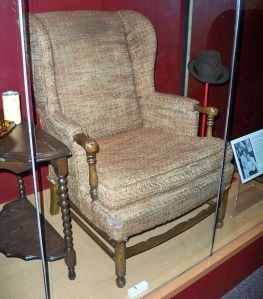Founded fifteen years before the onset of the American Civil War, the Smithsonian Institution has always managed to stay relevant by embracing change. This has never been truer than today, with the explosion of digital technology we have seen in recent decades. It is a daunting challenge. The Smithsonian operates nineteen museums and galleries, most of them in Washington but many spread out across the country. There are also the nine research institutes, as well as cooperative relationships with 168 affiliate institutions that also trace our country’s natural and historic legacy. One of my favorite outposts is the Rock ‘n’ Soul Museum. If ever in Memphis, just go. All told the Smithsonian holds about 137 million items, only about 2% of which are on display at any given time. When we were at the American History Museum last summer we missed seeing Fonzie’s leather jacket because it had been taken out of rotation to make way for Farrah Fawcett’s swimsuit. A small team of scientists is trying to solve this problem, or at least alleviate it somewhat. Their answer? 3D imagery of select items from the museums holdings. It has already begun with a 3D replica of a Jefferson statue that is on display at the current Slavery at Jefferson’s Monticello exhibit in Washington. I do not think 3D imagery will ever supplant actual existing objects and I would not want it to; the reason for visiting a museum in the first place is to witness the real thing. It is an intriguing project however, and one that has many possibilities if done wisely. It will be interesting to see where this leads.
(image/Archie Bunker’s chair at American History Museum, Matthew G. Bisanz)

